.jpg)
Frontispiece: Armillaria mellea, photo by Frederick A. Stevens
CALIFORNIA
MUSHROOMS
The Comprehensive Identification Guide
Dennis E. Desjardin
Michael G. Wood
Frederick A. Stevens
Timber Press
Portland London
Copyright 2014 by Dennis E. Desjardin, Michael G. Wood, and Frederick A. Stevens. All rights reserved.
Published in 2014 by Timber Press, Inc.
The Haseltine Building
133 S.W. Second Avenue,
Suite 450
Portland, Oregon 97204-3527
timberpress.com
6a Lonsdale Road
London NW6 6RD
timberpress.co.uk
Text and cover design by Susan Applegate
Library of Congress Cataloging-in-Publication Data
Desjardin, Dennis E., 1950
California mushrooms: the comprehensive identification guide/Dennis E. Desjardin, Michael G. Wood, Frederick A. Stevens.First edition.
pages cm
Includes bibliographical references and index.
ISBN 978-1-60469-660-8
1. MushroomsCaliforniaIdentification. I. Wood, Michael, 1950 II. Stevens, Frederick Allard, 1940III. Title.
QK605.5.C2D47 2014
579.609794dc23
2014000925
The information in this book is accurate and complete to the best of our knowledge. All recommendations are made without guarantee on the part of the authors or Timber Press. The authors and publisher disclaim any liability in connection with the use of this information. In particular, eating wild mushrooms is inherently risky. Mushrooms can be easily mistaken, and individuals vary in their physiological reactions to mushrooms that are touched or consumed.
CONTENTS
Dedication
This book is dedicated to Harry D. Thiers (19192000)teacher, mentor, researcher, and scholar. More than anyone before him, Dr. Thiers profoundly influenced mushroom taxonomy in California.
Harry Thiers was born in Ft. McKavett, Texas, on 22 January 1919. He received a bachelor of arts degree from the University of Texas (UT) in 1941, served in the U.S. Navy from 1942 to 1945, received a master of arts degree from UT in 1947, and earned a PhD at the University of Michigan in 1956, studying under the eminent North American mycologist Alexander Smith. His doctoral dissertation was on the Agaricales of the pine belt in eastern Texas.

Official portrait of Harry D. Thiers, President of the Mycological Society of America, 1982
As an academician, Dr. Thiers began his career at Texas A&M University, where he taught for 12 years. In 1959 he moved to California and became a professor at San Francisco State University until retirement in 1989. During his distinguished career, he mentored 35 masters degree students (the highest degree awarded at SFSU), of which 19 went on to receive their doctoral degrees. In recognition of his superior teaching abilities, Dr. Thiers was honored with the W. H. Weston Award for Teaching Excellence by the Mycological Society of America (MSA). Several awards were established in his name, including the H. D. Thiers Scholarship of the Mycological Society of San Francisco (MSSF) and the Thiers Travel Award of MSA. In addition, a major Festschrift was published to honor his 70th birthday in 1989 (Mycotaxon 34:1246). He served in all leadership roles of the MSA; he was elected its President in 1982 and awarded the Distinguished Mycologist Award in 1990 for his outstanding contributions to the field of mycology. The California Academy of Sciences presented him their highest honor, the Fellows Medal, in 1998.
As a researcher, Dr. Thiers was an expert on the taxonomy and evolution of fleshy fungi, focusing mainly on California mushrooms, but he traveled the world collecting wherever he went. He was recognized worldwide as an authority on boletes and an innovator in the research on secotioid fungi. His descriptions of over 150 new species of mushrooms were published in eight books and 50 scientific papers. Eighteen different species are named in his honor. Dr. Thiers worked tirelessly on the mushrooms of California for over 40 years. His research culminated in the establishment of a series of monographs, The Agaricales of California. To date, treatments of 26 genera are included in the series. Upon arriving at SFSU, Dr. Thiers began building a herbarium to house his specimens. The collection now numbers over 120,000 specimens, half of which are mushrooms (the remainder are lichens, bryophytes, vascular plants, and algae). In 1989, the herbarium was officially named the Harry D. Thiers Herbarium; it is the repository of the voucher specimens for this book and one of the more important mushroom herbaria in North America.
Few mycologists in North America were as committed to educating the public as Dr. Thiers. For over 30 years he served as the scientific advisor to the MSSF, presenting public lectures, conducting workshops on mushroom identification, and leading forays throughout California. His knowledge of natural history was boundless, enthusiasm for mushrooms infectious, sense of humor contagious, and patience with students endless. He inspired countless mycophiles to go beyond collecting mushrooms for the table, to dig deeper into their taxonomy, ecology, and phylogeny. Dr. Thiers was our mentor, cajoler, friend, and inspirationwe dedicate this book to him.
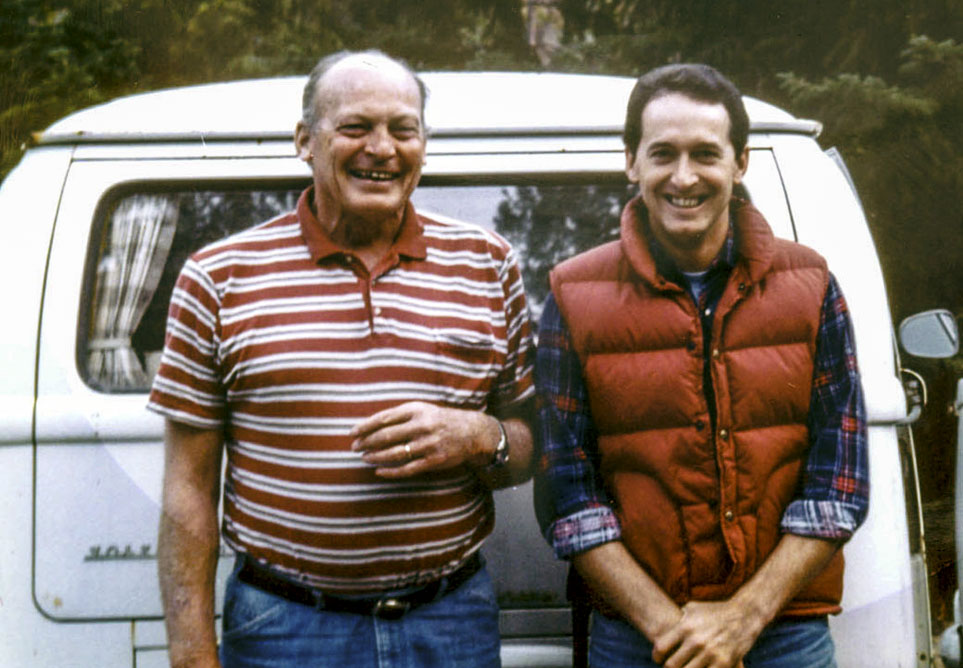
Harry Thiers and Dennis Desjardin on a foray in 1982 DED
Acknowledgments
A book such as this, based on data accumulated over the past 30 years, would not be possible without the help of many individuals. We are grateful to the following people for providing unpublished data and taxonomic or nomenclatural advice: Joseph Ammirati, David Arora, Michael Beug, Dimitar Bojantchev, Thomas Bruns, Darvin DeShazer, Roy Halling, Richard Kerrigan, David Largent, Gary Lincoff, P. Brandon Matheny, Andrew Methven, Steven Pencall, Brian Perry, Ronald Petersen, Herb Saylor, Douglas Smith, Harry Thiers, Steve Trudell, and Else Vellinga. We thank all who have provided specimens for study, including members of Californias mycological societies, especially the Mycological Society of San Francisco, and students at San Francisco State University, University of CaliforniaBerkeley, University of CaliforniaDavis, and Humboldt State University. A number of excellent photographers have provided images used in this book (see Photo Credits), and they are gratefully acknowledged. Finally, we thank Juree Sondker of Timber Press for her patience and efficient handling of our interactions with the publisher.
Dennis E. DesjardinI would not have become a mycologist if my grandparents, Louis and Maria Tosio, and parents, Edmund and Alice Desjardin, had not introduced me to mushrooms at an early age. I am especially indebted to my mother for showing me places to collect and for providing room and board for my students and colleagues during forays to Crescent City. I thank my wife, Wipapat (Ann) Kladwang, for providing love, understanding, and emotional support throughout this project, especially during headache-inducing nomenclatural quandaries. Finally, I am indebted to my mentors, Harry Thiers, Ronald Petersen, and Egon Horak for their training, criticism, encouragement, support, and lasting inspiration.
Michael G. WoodTo acknowledge your spouse for help has become almost clich, but here it is perfectly accurate. Without the love, support, and companionship of my lovely wife, Jane Wardzinska, my work on this book and my dedication to mycology would not have been possible. I also want to acknowledge the two persons most influential to me during my early years of mycological learning, Herb Saylor and Harry Thiers.
Next page

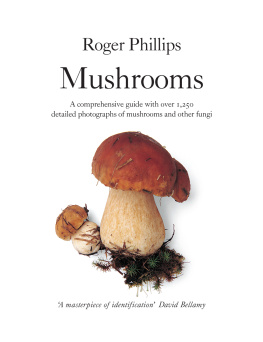
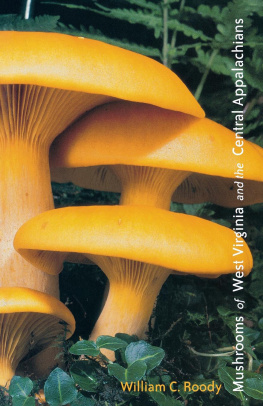
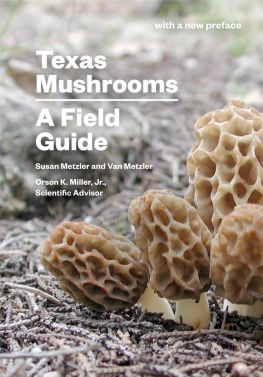

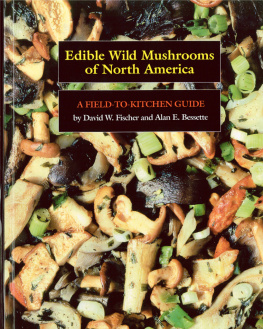
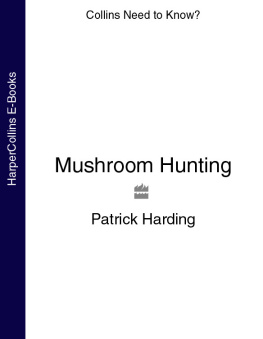
.jpg)

